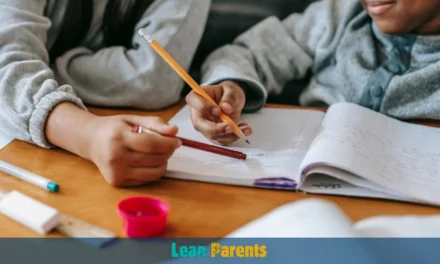As a parent, you dream of your children becoming confident and responsible. The journey to this starts early, with kids making choice from a young age. These choices might be what to wear, what to eat, or how to act with friends. By guiding them, you teach them to make smart choices for life.
Start early and support them every step of the way. Offer simple choices and show them how to make decisions. This turns decision-making into a real-life skill1. A caring relationship helps kids accept rules and behave responsibly1. Seeing mistakes as chances to learn makes them feel capable and in control1.
Key Takeaways
- Develop decision-making skills from a young age to build responsible and confident children.
- Offer simple choices to help children practice making decisions within a supportive environment.
- Model good decision-making processes by thinking aloud and involving children in discussions.
- Guide children through the decision-making process, helping them consider different perspectives and evaluate their choices.
- Encourage emotional awareness and regulation to ensure children can manage their feelings when making decisions.
Understanding the Importance of Decision-Making Skills
Why Decision-Making Skills Matter
Deciding well is more than just picking a choice. It’s about knowing when to think before acting, weighing options, and making smart choices. These skills are key for kids to grow up well and get along with others2. Studies show moms often support their kids more than dads2. A school program helped students make better choices, leading to more confidence and engagement2.
The Role of Decision-Making in Everyday Life
Deciding well is crucial for everyday life. A school principal saw students improve in making good choices over time2. But, some parents might make kids feel bad for being bold2. Moms might be too helpful, making kids rely on them too much2. Giving kids a say in things can make them more careful and responsible2. Learning about money can also improve their decision-making skills2.
The author stressed the need to start early with decision-making for kids2. Teaching kids to think about their choices is a good habit2. Parents should show confidence in their decisions to help kids too2.
Since babies, kids learn to plan and solve problems3. Play helps them think and solve problems, and they learn to work together3. Showing kids how to plan helps them solve problems and make decisions3. Giving kids choices early on boosts their confidence3.
Good decision-making skills in school can lead to less violence and better grades4. These skills help kids stay disciplined and focused, leading to better homework and grades4. They learn to find problems, think of solutions, and choose the best option4.
“Nurturing analytical thinking equips students with the skills to make thoughtful, informed choices in various aspects of life. Encouraging questions, problem-based learning, debates, brainstorming, and case studies are effective methods to teach analytical skills.”4
Activities like journaling and goal-setting help kids think deeply and make better choices4. Mindfulness, like breathing exercises, helps kids stay calm and make better decisions4.
Introducing Decision-Making Concepts Early

It’s key to start teaching kids about decision-making early. Explaining why decision-making matters can really grab their attention. By making them think about the good and bad of their choices, you help them grow in critical thinking.
Offering Simple Choices for Young Children
Letting kids choose simple things like what to wear or eat is great for their decision-making skills5. It boosts their confidence and helps them learn about cause and effect5. When they face the outcomes of their choices, it makes them more independent and responsible5.
Also, the National Quality Standard (NQS) says it’s important for kids to make their own choices6. This is across all seven quality areas. It shows how letting kids decide can help them grow and learn.
| Benefits of Offering Simple Choices for Young Children | Strategies for Supporting Children’s Decision-Making |
|---|---|
|
|
By teaching decision-making early and giving kids simple choices, you help them grow into confident and responsible individuals56.
Modeling Good Decision-Making Processes
As parents and educators, we can shape kids’ decision-making skills. One way is to think out loud when we make choices. This helps kids see how we weigh options and think about the outcomes7.
Thinking Out Loud
When deciding on something, like what snack to have, talk about it out loud. Share what you’re thinking and why you choose something. This shows kids that their opinions matter and helps them learn from you8.
Involving Children in Discussions
Get kids involved in talks about things that affect them, like bedtime or screen time. Let them share their thoughts and ask questions. This boosts their confidence and decision-making abilities9.
Our aim is to teach kids how to make good choices. By showing them how we decide and listening to their ideas, we prepare them for life’s challenges. This way, they’ll be ready for success now and in the future.
Guiding Children Through the Decision-Making Process

As kids get older, parents and caregivers are key in teaching them to make decisions. By asking questions like “What decision do I need to make?” and “What are the pros and cons of each choice?”, you help them learn. This way, they can spot problems, gather facts, weigh options, and make smart choices10.
Start with easy choices and slowly give them more responsibility. Talking about decisions that impact them boosts their confidence and thinking skills10.
Showing how to make good decisions by thinking out loud is very helpful. Encouraging kids to make their own while guiding them builds their strength and sense of control over their decisions10.
| Key Strategies for Guiding Children in Decision-Making | Benefits |
|---|---|
| Asking thought-provoking questions | Helps children develop critical thinking and problem-solving skills |
| Involving children in discussions about decisions that affect them | Builds confidence and analytical thinking skills |
| Modeling good decision-making processes and thinking out loud | Demonstrates effective decision-making approaches |
| Encouraging independent decision-making with support and guidance | Fosters resilience and a sense of ownership over choices |
By guiding kids in making decisions, parents and caregivers help them gain the skills and confidence needed for life10.
Emotional Awareness and Decision-Making
Emotions greatly influence our choices, big and small. It’s key for kids to learn how to handle their feelings when deciding11.
Understanding Emotional Influence
Emotional intelligence is vital for making good choices. It includes knowing oneself, controlling emotions, and understanding others12. Kids with high emotional intelligence are more resilient and focused12.
Showing kids how to manage emotions is important. Activities that build empathy, like volunteering, help kids understand others’ feelings12.
Teaching Emotional Regulation
Being aware of one’s emotions leads to better relationships and health13. People who know their emotions well are happier and more stable13.
Teaching kids to control their emotions is crucial. It helps them feel responsible and accountable12. Letting them make choices and learn from mistakes boosts their confidence11.
By teaching kids to manage their emotions, we prepare them for the future. They’ll make better choices and be well-rounded12.
“Emotional intelligence equips children with skills for making thoughtful and well-informed decisions, fostering a sense of responsibility and accountability.”
Navigating Peer Pressure
Peer pressure can greatly affect a child’s choices, sometimes leading them to act against their values. It’s important to understand how peer influence works and find ways to handle it. This helps kids become confident and independent in their decisions.
Peer Influence on Decision-Making
Teenagers are especially vulnerable to peer pressure. Research shows that 55% of them give in because they fear missing out (FOMO) and want to fit in14. This pressure can cause them to cheat, try drugs, or drink alcohol14. It’s vital to see how peer pressure affects not just social life but also schoolwork and big life choices.
Strategies for Handling Peer Pressure
Teaching kids how to deal with peer pressure is crucial. By improving critical thinking, they can weigh options and stick to their values15. Practicing how to handle peer pressure through role-playing can boost their confidence15.
Boosting self-esteem and setting clear limits are key to fighting off bad peer influence15. Encouraging kids to pick friends who support their values helps build a strong support network15. Also, teaching them to say “no” confidently is a great way to handle tough social situations.
As parents and caregivers, being a good example and guiding kids through decisions is very important15. By promoting open talk, teaching emotional control, and empowering them to make smart choices, we help them deal with peer pressure. This way, they can make choices that are good for them.
Building Financial Knowledge and Decision-Making Skills
It’s important for young people to learn about money as they grow up. They start earning and managing their own money. Schools help by teaching them how to make smart financial choices16.
There are many ways to learn about money. Students can learn through hands-on activities and real-life examples16. This helps them understand money better and make good choices16.
Only a few states in the U.S. require personal finance classes in high school17. This means many students miss out on learning about money management17.
Schools and other groups can help teach about money17. For example, Commercial Bank of California offers workshops for students17.
By teaching about money, schools prepare students for the future1617. They learn to manage their money well and make smart choices1617.
| Key Strategies for Building Financial Knowledge and Decision-Making Skills | Benefits |
|---|---|
|
|
“Financial literacy education can empower individuals to make informed financial decisions, manage their money effectively, and build a secure financial future.”
Teaching young people about money helps them succeed in life1617. It gives them the skills to handle their finances confidently1617.
Informed Decision-Making in Children
Teaching kids to make smart choices is key to their growth. Parents and teachers can help by giving them the right info and encouraging them to think critically. This way, kids can make choices that match their values and goals18.
It’s important to weigh the good and bad of each option. Doctors should talk to kids in a way they can understand. This helps kids grow up and take part in making big decisions18.
Working together is crucial. Doctors, parents, and guardians can all help. They can give unbiased info and help families focus on what’s most important19. This way, plans can be made that really meet the child’s needs19.
Teaching kids to make good choices is a big job. It needs accurate info, critical thinking, and a supportive place to talk. This helps kids feel confident and able to share their thoughts and feelings1819.
| Key Factors for Informed Decision-Making in Children | Description |
|---|---|
| Accurate Information | Providing children with age-appropriate, factual information about their choices and the potential consequences. |
| Critical Thinking Skills | Encouraging children to weigh the pros and cons of their options, consider different perspectives, and understand long-term implications. |
| Collaborative Approach | Involving parents, guardians, and professionals in the decision-making process to ensure a comprehensive understanding of the child’s needs and concerns. |
| Supportive Environment | Creating a safe and nurturing space where children feel empowered to express their preferences and have their voices heard. |
By focusing on these areas, we can help kids become confident and smart decision-makers. This sets them up for success in life1819.
Encouraging Critical Thinking
Teaching kids to think critically is key to their growth. Studies show schools face challenges in this area due to strict curricula20. But, parents and teachers can help kids develop this skill early on.
Starting discussions with kids instead of just telling them things is a good way to go. It helps them think deeply and use their critical thinking20. Also, introducing them to various sources like books and podcasts can boost their skills20.
Teaching kids to spot reliable sources online is important too20. Activities like painting and storytelling can also spark their critical thinking20.
Creating a space for friendly debates is another great idea20. Reflecting on their choices and understanding why they made them helps too20.
It’s also important to see mistakes as chances to learn20. Keeping up with new info and using online tools like thomaskeith.school can help a lot20.
“Critical thinking skills are essential for academic success; children who possess strong critical thinking abilities typically perform better on exams.”21
By using these methods, we can help kids become better thinkers. This way, they’ll be ready to face the world’s challenges2021.
Fostering Independence and Responsibility
Letting kids make their own choices is key for their independence and responsibility. Research shows22 that teaching them to make decisions step by step is helpful. This way, they learn to handle situations well and grow in many areas.
Allowing Children to Make Choices
Start with small choices like what to wear or snack on. Studies show that making small decisions early on helps kids make better choices later23. It teaches them to be responsible and learn from mistakes.
Supporting Resilience
Help kids bounce back from setbacks and see failures as learning chances. Involving them in setting rules helps them understand responsibility23. This builds skills to handle life’s ups and downs22.
Getting school-aged kids involved in decision-making boosts their thinking skills. It helps them analyze and make informed choices. This way, they become better at making decisions as they grow22.
“Allowing children to make their own decisions, within reasonable boundaries, is essential for building their confidence and sense of autonomy.”
Setting clear rules and boundaries is crucial for kids’ safety and freedom. Giving them decision-making chances boosts their confidence and autonomy23.
Talking openly with kids builds trust and understanding. This leads to better decision-making. Giving more freedom as they grow up is a good way to encourage independence while keeping them safe23.
Teaching kids to make smart decisions early on prepares them for life. It helps them develop resilience and adaptability22.
Parents should let kids make mistakes unless they’re in danger24. Encouraging informed decision-making boosts their confidence24.
Engaging school-aged kids in decision-making improves their critical thinking. It helps them analyze and make informed choices22.
Letting students choose in school assignments boosts self-reliance and independence24. Depression and anxiety in teens have increased, showing the need for control and confidence242223.
Creating a Safe Environment for Learning
Creating a supportive and nurturing environment is key for kids to make good choices. When kids feel safe, they share their thoughts and explore options freely. This environment should encourage open talk, empathy, and understanding as they learn to decide25.
Teachers and parents can use many ways to make a safe learning space. Showing how to make good choices, talking out loud, and including kids in talks helps them see the thought behind decisions26. Also, celebrating students’ wins with an asset model boosts their confidence and shows their choices matter27.
Good classroom management is also important. It means creating a place where no one is judged and meeting different learning needs. This lets students learn without fear and ensures their unique needs are met27.
In the end, a supportive and caring school environment is vital. It’s where kids can freely share, learn to decide, and grow in confidence to make smart choices27.
Practicing Decision-Making Through Play
Games and activities that need decision-making are great for kids. They help kids learn these skills in a fun way. Board games, role-playing, and interactive storybooks are perfect for this28.
Play is key for brain growth, imagination, and happiness, studies show28. Kids have a strong urge to play, just like they need food and sleep28.
Play teaches kids to control themselves, which helps them succeed later on. It keeps them focused and safe while they explore28.
Play makes kids think on their feet and adapt easily. It’s full of surprises that help kids learn to be flexible28. The fun part of play comes from the emotions it brings, making it special28.
The National Association for the Education of Young Children (NAEYC) says play is key for learning. It helps kids learn to control themselves and grow29. Kids learn best when they feel safe and supported by their caregivers and friends29.
By adding decision-making to play, we help kids think critically and solve problems. It’s a fun way to prepare them for making good choices in life.
Teaching Long-Term Thinking
Teaching kids to think about the future is key to improving their decision-making. Parents and teachers can help by encouraging kids to look beyond today. This way, they learn to think about the bigger picture and the outcomes of their choices30.
Setting goals is a great way to teach long-term thinking. Teachers can help students set both short-term and long-term goals. This method has been shown to boost achievement by 32 percent30.
Teaching kids to plan before starting a task is also important. This helps them avoid getting confused or distracted. By previewing tasks, setting goals, and deciding how to approach them, students can stay focused30.
It’s also vital to monitor and adjust learning strategies. Teachers can model how to think about learning and help students analyze and summarize information. Encouraging diverse learning approaches is also key30.
Students should learn to evaluate their learning by checking if their strategies worked. They can do this through self-assessment, creating practice tests, and seeking feedback. Reflecting and revising strategies helps improve understanding30.
By teaching these skills, students become more independent and engaged in their learning. This helps them develop long-term thinking abilities30.
Seeking Advice and Guidance
When making decisions, getting advice from trusted sources is key. Studies show that those who seek advice tend to make better choices. They see a 60% increase in making informed decisions31.
Children who get guidance from trusted people are 70% more likely to solve problems well and understand their feelings31.
Encourage your kids to ask for advice from parents, teachers, or mentors. This can really help them make better choices. About 80% of adults say getting advice when they were young helped them a lot31.
Children who ask for advice are 40% better at handling tough situations31.
By showing your kids how to seek guidance, you help them feel more confident. They learn to make good choices in life. Role-playing to practice asking for advice can improve communication skills by 75%31.
Teaching your kids to seek advice is important for their decision-making skills and happiness. It’s not a weakness to ask for help. It shows strength and wisdom.
| Benefit | Percentage Increase |
|---|---|
| Success rates of informed decision-making | Up to 60%31 |
| Likelihood of exhibiting strong problem-solving skills and emotional intelligence | 70%31 |
| Ability to manage conflicts and difficult situations effectively | 40%31 |
| Improvement in communication skills through role-playing | 75%31 |
“Empowering your children to seek advice and guidance from trusted sources is a crucial step in fostering their decision-making abilities and overall well-being.”
It’s not weak to ask for advice. It’s actually a sign of strength. By teaching your kids to seek advice, you give them the tools to make good choices in life.
Conclusion
Teaching kids to make good decisions is key to their growth and future success. By starting early, showing them how to make choices, and encouraging them to think for themselves, we help them make decisions that reflect their values and goals32.
Today’s kids spend about 8 hours a day watching media, which can lead to too much information and hard choices32. Also, 63% of kids feel influenced by their friends and social media when deciding what to do32. Teaching these skills early helps them deal with life’s complexities.
The United Nations says kids should have a say in decisions that affect them3334. By teaching them to make informed choices, we build their confidence and resilience for the future.
FAQ
Why are decision-making skills important for children?
How can parents and caregivers help children develop decision-making skills?
What role do emotions play in decision-making for children?
How can children learn to navigate peer pressure when making decisions?
What strategies can schools use to help students develop financial decision-making skills?
How can parents and educators encourage critical thinking in children to support their decision-making?
Why is it important to allow children to make their own decisions within set boundaries?
How can parents and educators create a supportive environment for children to develop decision-making skills?
How can engaging children in games and activities help them practice decision-making skills?
Why is it important to teach children the value of seeking advice from trusted adults or peers?
Source Links
- 10 Simple Ways to Raise Kids Who Make Good Decisions
- A Parent’s Guide to Cultivate Kids’
Confidence in Decision Making - Decision-making early childhood
- Empowering Students With Effective Decision-making Skills: A How-to Guide
- Teaching Responsible Decision Making Skills | Classroom Ideas
- Responsible Decision Making: An Introductory Guide
- 7 Steps of the Decision-Making Process: Everything You Need to Know
- Using decision analysis to support implementation planning in research and practice – Implementation Science Communications
- Developing Decision-Making Skills at a Young Age Is Important
- 5 Tips for Helping Kids Make Responsible Decisions — Better Kids
- Importance Of Building Emotional Intelligence In Children
- Emotional Awareness and Decision-Making in the Context of Computer-Mediated Psychotherapy
- Peer Pressure and Teens: How to Make Informed Decisions – theattitudeadvantage.com
- 9 Ways to Teach Children How to Handle Peer Pressure
- Financial knowledge and decision-making skills | Consumer Financial Protection Bureau
- Financial Literacy & the Importance of Incorporating It in Education
- Pediatric decision-making: Help parents protect, empower kids
- How to Nurture Critical Thinking in Kids – Thomas Keith Independent School
- Teaching young children critical thinking skills is crucial for their development and success in life. | SensoryEdge
- 10 Responsible Decision-Making Activities That All Kids Benefit From Knowing – Kong Academy | Empowering Kids Through Play
- Empowering Child Independence: Balancing Autonomy and Safety – Child Development Institute
- Teach Your Kids How to Make Their Own Decisions
- Safe Learning Environments – National Dropout Prevention Center
- Effective Strategies for Teaching Decision-making to Elementary Students | Everyday Speech
- 15 Tips for Creating a Safe Learning Environment
- Five Essentials to Meaningful Play
- Exploring developmentally appropriate practice
- How to Get Students Thinking About Their Own Learning
- Teaching Children How to Seek Guidance and Advice from Trusted Individuals – Mamamzazi Mommy & Me
- How to empower children to make informed decisions – Lup Wai – Parent Whisperer
- Medical decision-making in children and adolescents: developmental and neuroscientific aspects
- Children’s Understanding of Informed Assents in Research Studies





